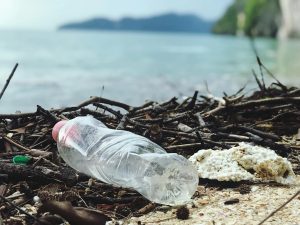Dive Deep into the World of Water Quality Standards

Have you ever taken a sip of water and wondered, “Is this really safe to drink?” It’s a thought that crosses many minds, especially in a world where we’re constantly bombarded with news about pollution and health hazards. Water, the essence of life, can sometimes seem like a mystery wrapped in a riddle, especially when it comes to understanding what makes it safe or unsafe.
Picture this: you’re on a road trip, and you stop at a roadside diner. The friendly waitress pours you a glass of water, and you take a sip. But wait! How do you know that glass is filled with clean, safe water? This is where water quality standards come into play. These standards are like the rules of a game that ensure our water is not just clear but also safe for drinking, swimming, and supporting all forms of life.
So, what exactly are these standards? Think of them as guidelines set by health organizations and environmental agencies to protect us from harmful contaminants. They cover everything from bacteria and viruses to chemicals and heavy metals. For instance, did you know that the Environmental Protection Agency (EPA) in the U.S. has established limits on over 90 contaminants? Yep, they’re serious about keeping our H2O safe! But it’s not just about meeting numbers on a chart; it’s about ensuring that every drop we consume is as pure as it can be.
Now, let’s dig a little deeper. Have you ever heard of the term total dissolved solids (TDS)? This is a fancy way of saying all the stuff that’s dissolved in your water. Too much TDS can affect taste, cause scaling in pipes, and even harm aquatic life. Water quality standards help monitor TDS levels, ensuring they stay within a range that’s not just drinkable but enjoyable. Imagine sipping a refreshing glass of water that tastes like it was just pulled from a mountain spring; that’s the goal!
- Bacterial Contaminants: The presence of harmful bacteria can lead to serious health issues.
- Chemicals & Heavy Metals: Lead, mercury, and pesticides are just a few of the nasties we want to keep out!
- pH Levels: Too acidic or too alkaline can affect not just our bodies but also the plumbing in our homes.
- Microbial Content: Ensuring water is free from harmful microorganisms is crucial for public health.
But here’s the kicker: even if your local water supply meets these standards, it doesn’t mean your kitchen faucet is delivering the best quality. Old pipes, for example, can leach lead and other contaminants right into your drinking water. Yikes! It’s one of those things we often overlook. Regular testing and awareness can make a big difference. After all, you wouldn’t drive a car without checking the oil, right? Same logic applies here.
So, what can you do? For starters, advocate for regular water testing in your community. Stay informed. If you’re curious about your local water quality, many municipalities publish annual reports that are often packed with valuable insights. And if you’re feeling a little extra proactive, consider investing in a good water filter. Not only can it improve taste, but it can also give you peace of mind.
Ultimately, clean water is more than just a necessity; it’s a right. As we navigate our way through the complexities of water quality, let’s remember that every drop counts. Embracing water quality standards isn’t just about numbers and regulations—it’s about safeguarding our health and the environment for generations to come.




